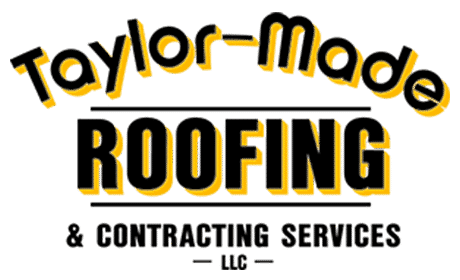Residential Roofing FAQ
A. Some factors that might indicate that your roof has problems include missing, curling, or cracked shingles; paint that is peeling or blistering; water stains on interior walls or ceilings; and leakage in the attic.
The best way to know if your roof has a potential issue is to have it regularly inspected by an expert. Learn about the Taylor Made Roofing yearly maintenance program and its benefits.
A. A leaky roof doesn’t necessarily mean that your roof will need to be replaced. The cause could be a damaged section of roof. Schedule a free roofing estimate and an expert will evaluate your roof and let you know if it needs to be replaced or repaired.
A. It is not recommended that homeowners complete roofing work on their own. Without proper training, homeowners could do harm to the roof by using incorrect techniques and could seriously injure themselves. With roofing issues, it is always best to seek the help of an expert.
A. There are several factors that determine the expected lifespan of your home’s roof, including local weather and environment, the type of roof, and maintenance done on the roof. According to The American Society of Home Inspectors, wood shingles last approximately 10-40 years; asphalt shingles, 15-20 years; clay or concrete tiles, 20+ years, slate, 30-100 years; and metal roofing, 15-40 years. Ask a roofing professional what type of roofing is best for your home, and take the time to understand what is included in a roofing company’s warranty.
Commercial Roofing FAQ
A. There are a variety of options available, and our roofing experts can help you determine which system best fits your facility based on a variety of factors, including your facility’s needs and energy costs. Contact us today to get started.
A. Yes. Proper maintenance extends the lifespan of your roofing system. By scheduling regular inspections to ensure the membranes, sealant, caulking, flashing, and penetrations are in good condition, you can ensure that problems are found and fixed before they cause significant damage.
A. Our team can conduct a roof assessment to evaluate the quality of your existing roof and determine if it needs to be replaced. If your roof has internal damage, such as a leak, mold, water stains, or cracks, it may be unstable and require a replacement. Your roof’s lifespan will depend on the type of roof system, the quality of the products, the initial installation, the climate, and how well it’s been maintained.
A. If your current roof is in good shape, you can likely save money by installing a new roof without removing the existing roofing system. However, there are situations in which a roof tear-off is required. First, if your facility already has two roofs, by law you cannot add another layer. This regulation aims to prevent excess weight and stress on the structure of buildings. Second, if your roof is currently damaged or unsafe, we will need to remove it before installing a new roof.
Siding, Soffits, and Fascia FAQ
A. Vinyl and fiber cement siding require very little maintenance. Clean them periodically using a garden hose or pressure washer to remove dirt, debris, and insects, and keep an eye out for issues like loose siding, cracks, and holes.
Wood siding, on the other hand, requires more upkeep. To protect it, you will need to apply paint, stain, or a sealer and reapply the treatment regularly going forward (the frequency of reapplication will depend on the product you choose). Clean your wood siding once a year and remove mildew and rust stains. Finally, watch out for rot, mold, and pests, and schedule repairs quickly to limit damage.
A. Your siding’s lifespan will depend on the product you choose, the quality of the installation, and how well you maintain it. Vinyl siding typically lasts about 20 to 40 years, and fiber cement siding can last as long as 50 years. If it is well maintained, wood siding should last about 20 to 40 years.
A. Regularly inspect your siding to assess its condition and watch out for damage. When you notice any of the following signs, contact Taylor-Made Roofing: dry rot, cracks, gaps, warping, bulging, rotting, loose pieces, mildew, fungus, mold, bubbling under your siding, and severe color fading. In addition, if your siding is requiring more maintenance or your electric bills are skyrocketing, it may be time to replace your siding. Our siding experts can help you determine if it’s necessary.
A. Soffit is the exposed siding beneath your roof’s overhang. Because soffits include ventilation, they help ensure that there is steady airflow to your roof and attic. They also keep rainwater (carried up by the wind) and pests out of your home.
Fascia, located directly above the soffit, is the exposed board on the front of your roof’s overhang. It supports the lower edge of your roof and your guttering system. Because it’s very visible, it affects your home’s curb appeal.
Guttering FAQ
A. It’s generally recommended that you clean your gutters twice a year, once in late spring and once in early fall. However, you may wish to clean your gutters more frequently if you have overhanging trees, especially pine trees (which shed needles year-round).
A. Most gutter systems last about 20 years if they are properly installed and maintained. Watch out for rust, leaks, sagging, and splitting gutters, and contact Taylor-Made Roofing if you notice these signs of damage. We can determine whether a repair or replacement is necessary.
